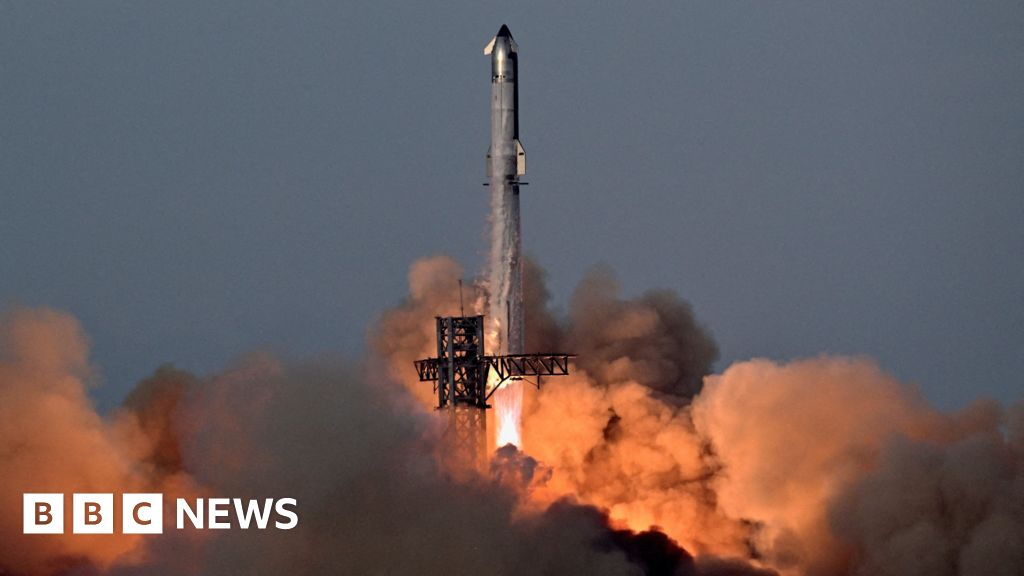In a successful test flight that has brought hope to SpaceX, the company launched its next-gen rocket, Starship, from Texas, marking a resurgence from previous turbulent launches.
The largest rocket ever constructed successfully liftoff just after 18:30 local time (23:30 BST), embarking on a gripping 60-minute mission. During the flight, the rocket faced challenges including apparent engine explosions and flaps catching fire, yet continued its journey into orbit.
The U.S. space agency NASA is counting on Starship for its Artemis program, which aims to return humans to the Moon by 2027.
CEO Elon Musk expressed his satisfaction with the flight on social media, praising the SpaceX team. This success comes after three Starship launches resulted in failure, with one explosion occurring during a test in June of this year.
Starship's design allows for it to become a fully reusable transport system intended for future lunar and Martian missions. Previous successful tests of the original Starship version paved the way for this latest endeavor.
As the rocket returned to Earth, it displayed signs of wear but proved capable of handling a strenuous test of its limits. SpaceX aims to confirm the rocket for crewed missions as soon as next year, with uncrewed flights to Mars anticipated within the next 12 months.
Despite skepticism regarding timelines, the successful launch represents a critical leap forward for SpaceX, facing prior concerns about its trajectory amidst notable political distractions for Musk.



















